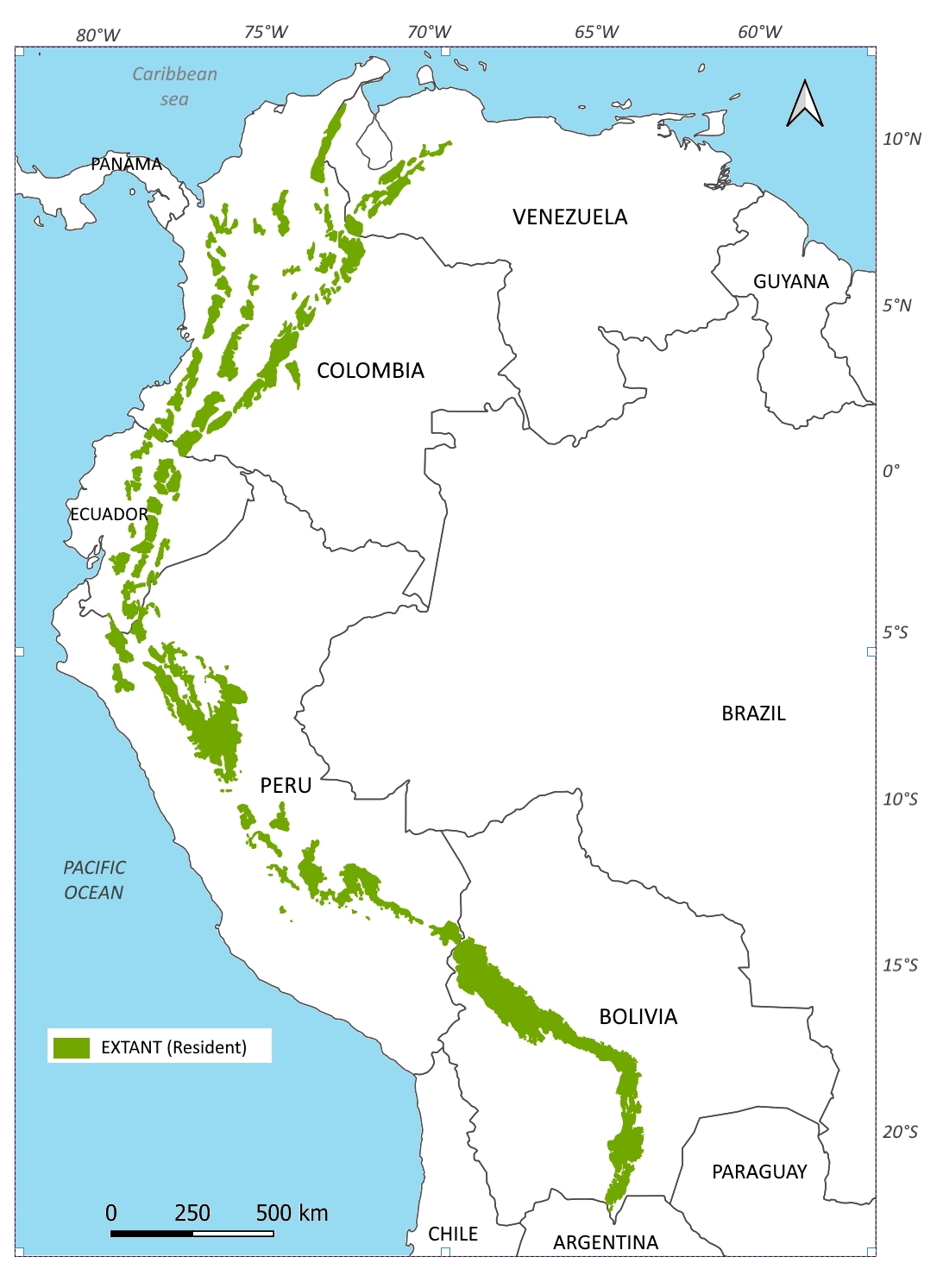Distribution: The Andean bear is the only bear species occurring entirely within the tropics. It is endemic to the Andes region in a 4,600 km-long, narrow band from Venezuela to southern Bolivia. It ranges farther south than any other bear species — to the southernmost mountains of Bolivia (22° S). Other extinct species from the Tremarctine subfamily once ranged to the southern tip of Chile (52° S) and to the eastern tip of Brazil (34° W).
Debate persists as to the possible presence of occasional vagrant Andean bears in northern Argentina. Hair samples, genetically confirmed as Andean bears, were purportedly found in this region, but the origin of these samples remains in dispute. Some uncertainty also persists as to whether a few vagrant bears may cross from Colombia into Panama. Supposedly, a few specimens were collected in Panama in the 1950s. Some claw-mark sign on trees was seen during a 2007 survey in potential Andean bear habitat in southernmost Panama, but none that could be definitively assigned as from Andean bears.

Range map of Andean bear (T ornatus) mapped by Bear Specialist Group created by X Velez-Liendo
Note: The range map shown here, as with the Andean bear range map in IUCN Red List of Threatened Species, were both created from habitat modeling. However, the IUCN map also modeled the impact of human activity on bear habitat, and displayed only patches large and close enough to sustain a viable bear population, whereas the map here shows all patches of predicted current range.
Range countries: (5): Bolivia, Colombia, Ecuador, Peru, Venezuela. Potential sign of vagrants reported but unconfirmed in Argentina and Panama.
Extirpation: Historical records for this species are poor, so its true historical range is unknown; however, it has never been recorded outside the Andes region. Within the last 50 years it has been lost from parts of each range country, but has not been extirpated from any range country. If the historic range included resident populations in southern Panama, it was extirpated from there.
Elevational range: Andean bears typically live in mountainous environments and occur at elevations above treeline at up to 4,750 m and perhaps occasionally up to 5,200 m. At the other extreme, in Peru they exist in lowlands west of the Andes at about 200 m elevation.
Overlap with other species: This bear’s range does not overlap with any other living bear species.